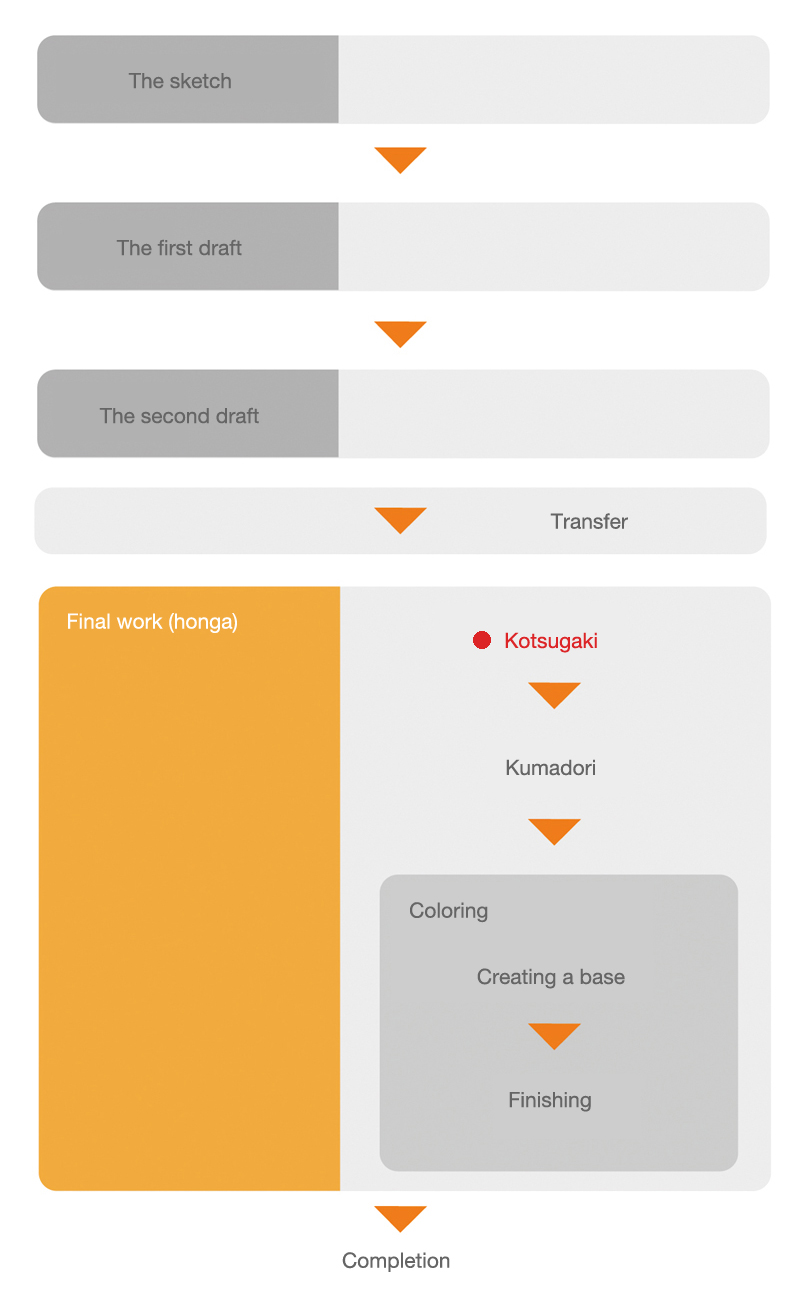Kotsugaki
骨描き
Kotsugaki
CATEGORIES
Kotsugaki is the technique of outlining in sumi ink before adding colors. Kotsu means outline. The outline of a picture becomes an important part of the coloring process. In addition to Japanese painting, the technique is also used in adding artwork to pottery.
In Japanese painting, if the final work (honga) is on washi paper, the broad outline is transferred to the final work by nenshi and the kotsugaki is added to the copied lines. If the work is on silk, the silk is placed on top of the broad outline where it can be seen and the kotsugaki is added. Kotsugaki is not simply tracing; it is a work of passion, drawing anew to create lines that live and breathe. The artist checks the quality and form as he draws. Rather than drawing over all of the copied lines, the detailed lines are often left as they are without adding kotsugaki. At other times, more lines are drawn to augment the tracing. Sometimes, the artist will redraw the copied lines if the addition of paint hides them from view. There are various types of lines but the type used most often in kotsugaki is Tessenbyo (wire line drawing). Tessenbyo is drawn with a uniform, unwavering thickness, much like a strand of wire and expresses a sense of unrelenting tension. The strokes are made at a uniform speed so that there are no breaks in the lines. Line drawing brushes such as the sakuyo are used in this. Many outlines are done in sumi ink but sometimes a little vermilion and chalk is also added.
In techniques such as Mokkotsu (painting without outline), etc., where colors are used without an outline, the colors are added without kotsugaki depending on the expression that is aimed for but kotsugaki remains as one of the key techniques in the basic creative processes in Japanese painting.

- The process of making a Japanese painting

